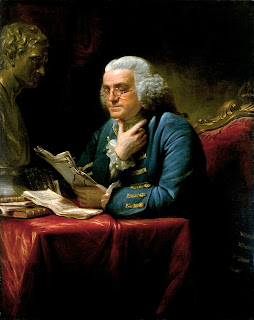Leading the Age of Uncertainity
In a world marked by rapid technological advancements, shifting consumer expectations, and unforeseen global events, the ability to adapt and innovate is crucial for business leaders. Navigating this landscape requires not just strategic foresight but also the agility to pivot when necessary. For leaders focused on growth and managing P&L across high-tech and media sectors, embracing these qualities is essential for sustained success.
The Power of Adaptive Leadership: Lessons from Mary Barra and General Motors
Mary Barra, CEO of General Motors (GM), exemplifies adaptive leadership in action. When she took the helm in 2014, GM was facing significant challenges, including technological disruption and shifting consumer preferences. Barra’s approach to transforming GM into a leader in electric and autonomous vehicles showcases the importance of adaptability in leadership.
Under her guidance, GM has redefined its vision to align with the future of transportation. Barra’s focus on innovation, strategic partnerships, and organizational culture has enabled the company to pivot from traditional manufacturing to embracing new growth opportunities in electric vehicles. This lesson is crucial for leaders who must continually assess and adapt their business models to stay ahead of the curve.
Innovating for Growth: Reed Hastings and the Netflix Evolution
Reed Hastings, co-founder and co-CEO of Netflix, has transformed the entertainment industry by embracing continuous innovation. Netflix’s evolution from a DVD rental service to a global streaming giant illustrates the power of reimagining a business model to meet changing market demands.
Hastings’ willingness to take risks and invest in original content, even when the streaming market was nascent, has positioned Netflix as a dominant player in the media landscape. This focus on innovation has not only driven growth but also reshaped how consumers access and engage with content. For business leaders, Hastings’ example highlights the importance of foresight and the courage to innovate in pursuit of long-term growth.
Embracing Digital Transformation: Sundar Pichai and Google’s Vision
Sundar Pichai, CEO of Alphabet Inc. and Google, has guided the company through significant digital transformation, ensuring it remains at the forefront of technological innovation. Pichai’s leadership has been marked by a commitment to leveraging AI, cloud computing, and digital services to drive the company’s growth.
Google’s success under Pichai demonstrates the importance of embracing digital transformation and leveraging new technologies to create value. For leaders in high-tech and media sectors, understanding and capitalizing on digital trends is essential for staying competitive. Pichai’s strategic vision offers a roadmap for navigating the complexities of digital disruption.
Balancing Innovation with Sustainability: Yvon Chouinard and Patagonia
Yvon Chouinard, founder of Patagonia, has built a company that thrives by balancing innovation with sustainability. Patagonia’s commitment to environmental responsibility and ethical business practices has set it apart in the highly competitive outdoor apparel industry.
Chouinard’s approach highlights the importance of aligning business strategies with broader social and environmental goals. For leaders managing P&L in today’s market, integrating sustainability into their business models can drive both growth and brand loyalty. Patagonia’s success demonstrates that innovation doesn’t have to come at the expense of ethical values, and that businesses can lead the way in creating a more sustainable future.
Leveraging Data for Strategic Decisions: Dara Khosrowshahi and Uber’s Reinvention
Dara Khosrowshahi, CEO of Uber, has steered the company through a period of significant reinvention. Under his leadership, Uber has shifted its focus from rapid expansion to sustainable growth, leveraging data and technology to improve operations and customer experience.
Khosrowshahi’s emphasis on data-driven decision-making has been key to Uber’s transformation. By using data to understand customer behavior, optimize pricing, and improve service delivery, Uber has been able to adapt to changing market dynamics and stay competitive. For business leaders, Khosrowshahi’s approach underscores the importance of harnessing data to drive strategic decisions and achieve business objectives.
Cultivating a Culture of Innovation: Satya Nadella and Microsoft’s Renaissance
Satya Nadella’s leadership at Microsoft has been characterized by a deep commitment to fostering a culture of innovation. Since becoming CEO, Nadella has led Microsoft through a period of revitalization, focusing on cloud computing, AI, and cross-platform solutions.
Nadella’s ability to cultivate a culture that encourages experimentation and embraces new ideas has been key to Microsoft’s success. This culture of innovation has enabled the company to explore new growth areas and stay relevant in an increasingly competitive market. For business leaders, fostering a similar culture within their organizations can drive continuous innovation and help navigate the challenges of a rapidly changing business environment.
Customer-Centric Innovation: Indra Nooyi and PepsiCo’s Transformation
Indra Nooyi, former CEO of PepsiCo, revolutionized the company by focusing on health-conscious products and sustainable practices, aligning with evolving consumer preferences. Nooyi’s leadership was marked by her commitment to what she called “Performance with Purpose,” a strategy that balanced profitability with environmental sustainability and public health.
Nooyi’s approach demonstrates the importance of aligning innovation with customer needs and societal trends. By anticipating shifts in consumer behavior and leading PepsiCo’s transition toward healthier products, Nooyi was able to drive growth in new markets while maintaining the company’s competitive edge. Her leadership is a reminder that innovation must be customer-centric to succeed in today’s market.
Resilient Leadership in Crisis: Arne Sorenson and Marriott International
Arne Sorenson, the late CEO of Marriott International, exemplified resilient leadership during crises, particularly during the COVID-19 pandemic. Under his leadership, Marriott navigated one of the most challenging periods in its history, implementing strategies to support employees, maintain operations, and adapt to new market conditions.
Sorenson’s focus on resilience, empathy, and clear communication helped Marriott weather the storm and prepare for recovery. His leadership highlights the importance of resilience in the face of adversity, an essential trait for business leaders dealing with unexpected challenges. By prioritizing people and adapting quickly to changing circumstances, Sorenson set an example of how to lead with both strength and compassion.
Strategic Partnerships for Growth: Satya Nadella and Microsoft’s Ecosystem Strategy
Satya Nadella’s leadership at Microsoft is also notable for its focus on building strategic partnerships. Nadella has prioritized collaboration with other tech giants, such as partnerships with LinkedIn, GitHub, and various cloud providers. These alliances have expanded Microsoft’s ecosystem, enabling the company to access new markets and technologies.
For business leaders, Nadella’s emphasis on strategic partnerships underscores the importance of collaboration in driving growth. By forging alliances that complement and enhance their offerings, companies can achieve synergies that lead to innovation and increased market share.
Embracing Risk and Innovation: Elon Musk and SpaceX’s Bold Vision
Elon Musk, the visionary behind SpaceX, Tesla, and other ventures, is renowned for his willingness to embrace risk and pursue bold innovations. SpaceX’s success in developing reusable rockets and making space travel more accessible is a testament to Musk’s relentless focus on challenging the status quo.
Musk’s leadership style encourages taking calculated risks and pushing the boundaries of what is possible. For business leaders, this highlights the importance of being open to unconventional ideas and not shying away from ambitious goals. Musk’s journey with SpaceX is a reminder that innovation often requires venturing into uncharted territory, and that the biggest rewards come from the boldest moves.
Conclusion: Embracing Adaptability and Innovation
In today’s business landscape, adaptability and innovation are not just competitive advantages—they are necessities. Leaders who can navigate uncertainty, embrace change, and continually innovate are best positioned to thrive in the face of disruption. By drawing on the examples of leaders like Mary Barra, Reed Hastings, Sundar Pichai, Yvon Chouinard, Dara Khosrowshahi, Satya Nadella, Indra Nooyi, Arne Sorenson, and Elon Musk, business leaders can develop the agility and vision needed to lead their organizations to sustained success.
This article covers a broad range of examples, offering insights into how different leaders have leveraged adaptability and innovation to drive success in their respective fields.









Comments
Post a Comment